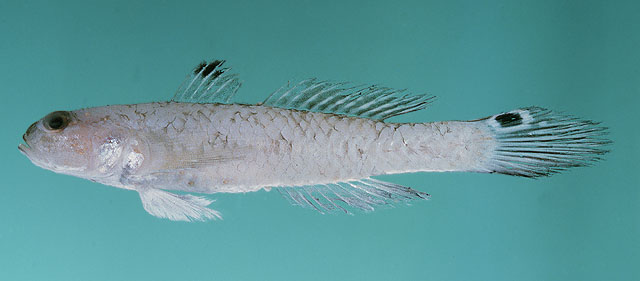| Gobiidae (Gobies), subfamily: Gobiinae |
| 15 cm TL (male/unsexed) |
|
demersal; marine |
| Indo-West Pacific: south to Natal, South Africa; India (Ref. 4833) and Japan (Ref. 559). |
|
Dorsal spines (total): 7-7; Dorsal soft rays (total): 9-11; Anal spines: 1-1; Anal soft rays: 9-10. Body greenish; fins dark; upper caudal fin base with a large black spot surrounded by yellow (Ref. 2798). |
| Parachaeturichthys spp. Inhabit deep water (Ref. 42915). Rarely enters estuaries (Ref. 4833). Captured by trawls over mud bottom (Ref. 11441). Found to contain tetrodotoxin (TTX) and anhydrotetrodotoxin (anh-TTX) which causes paralytic food poisoning (Ref. 54777). |
|
Least Concern (LC); Date assessed: 25 June 2018 Ref. (130435)
|
| poisonous to eat |
|
Reported from Tai Tam Bay (Ref. 77636) and near Chek Lap Kok (Ref. 125575). Also reported from Mirs Bay, Tolo Channel, and Tolo Harbour (Ref. 126271). Juveniles were recorded from Three Fathoms Cove (Ref. 125536). Sold in live fish markets. Caught via trawling (Ref. 125552). Also Ref. 94637. |
Source and more info: www.fishbase.org. For personal, classroom, and other internal use only. Not for publication.

